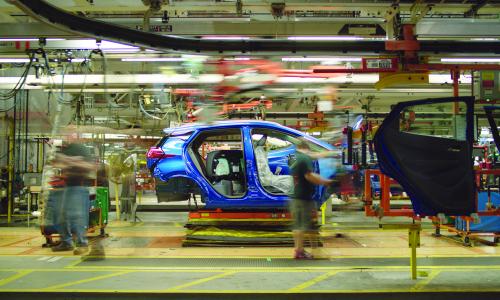Table of Contents
Transportation won’t fix itself. We need smart, forward-looking policies—not the status quo.
The US transportation system is in the midst of a transformation. New technologies are replacing gas-guzzling cars and trucks, while new mobility services are changing how we get around.
Much of this change is beneficial, as cleaner cars replace dirtier ones. But not everything is aligned with the realities of a carbon-constrained world; without the right state and federal policies, progress isn’t assured.
Vehicle standards
Efficient cars and trucks burn less gas, emit less pollution, and cost drivers less money to fill-up. But automakers rarely invest in fuel efficiency without requirements to do so; in fact, the fuel economy of the average US vehicles hardly changed at all until the Obama administration passed groundbreaking efficiency rules in 2011.
Maintaining and strengthening these standards is critical for hitting US climate goals, which hinge on steep reductions of global warming pollution from the US transportation sector.
Vehicle standards are also critical to address tailpipe pollution from cars and trucks, which causes smog, cancer, and breathing problems.
Cleaner fuels and electric vehicles
Regardless of how efficient your car is, oil is oil, and it still produces pollution. Cleaning it up, and replacing it entirely where possible, should be a main near-term policy goal for the United States.
Federal and state policy can help. Low-carbon fuel standards require fuels become cleaner over time. And “carbon intensity” tracking could ensure that what oil we do use doesn’t get dirtier.
Policies that support electric vehicles (EVs) are also critical; electricity is a cleaner fuel than oil, even when it’s generated from the dirtiest power grids. As the grid continues to transition to clean energy, electric cars and trucks will become even cleaner. Subsidies, incentives, and other solutions that get more EVs on the road are a critical pathway for cutting US carbon emissions.
Other policies
The US transportation system is large, complex, and involves many different authorities and interests. No single policy can cover all the important areas of focus; rather, multiple complementary policies must combine to create a sustainable, fair, long-term framework.
Other important transportation solutions include everything from increased investment in mass transit, to standards governing smog-forming pollutants, to local and state-level policies on the responsible deployment of ride-hailing services like Uber and Lyft.





